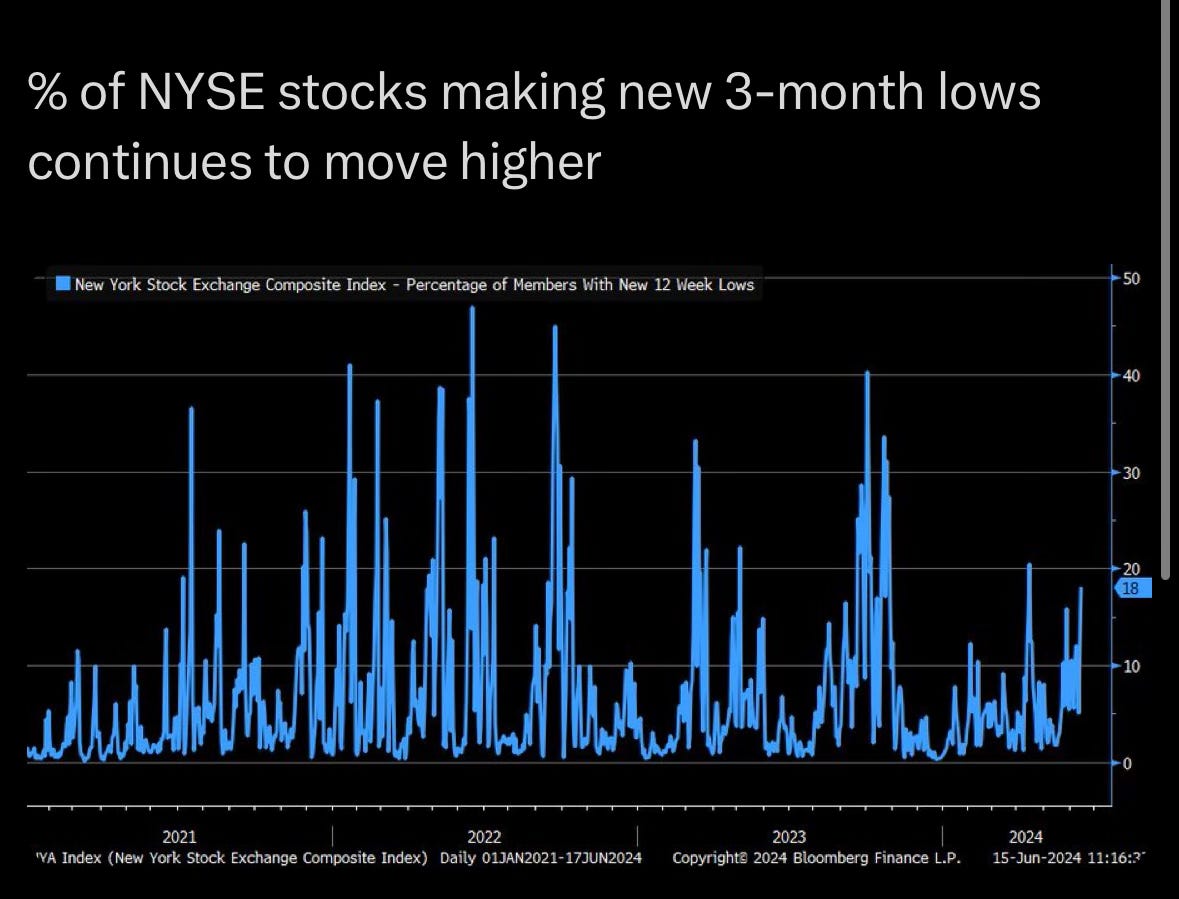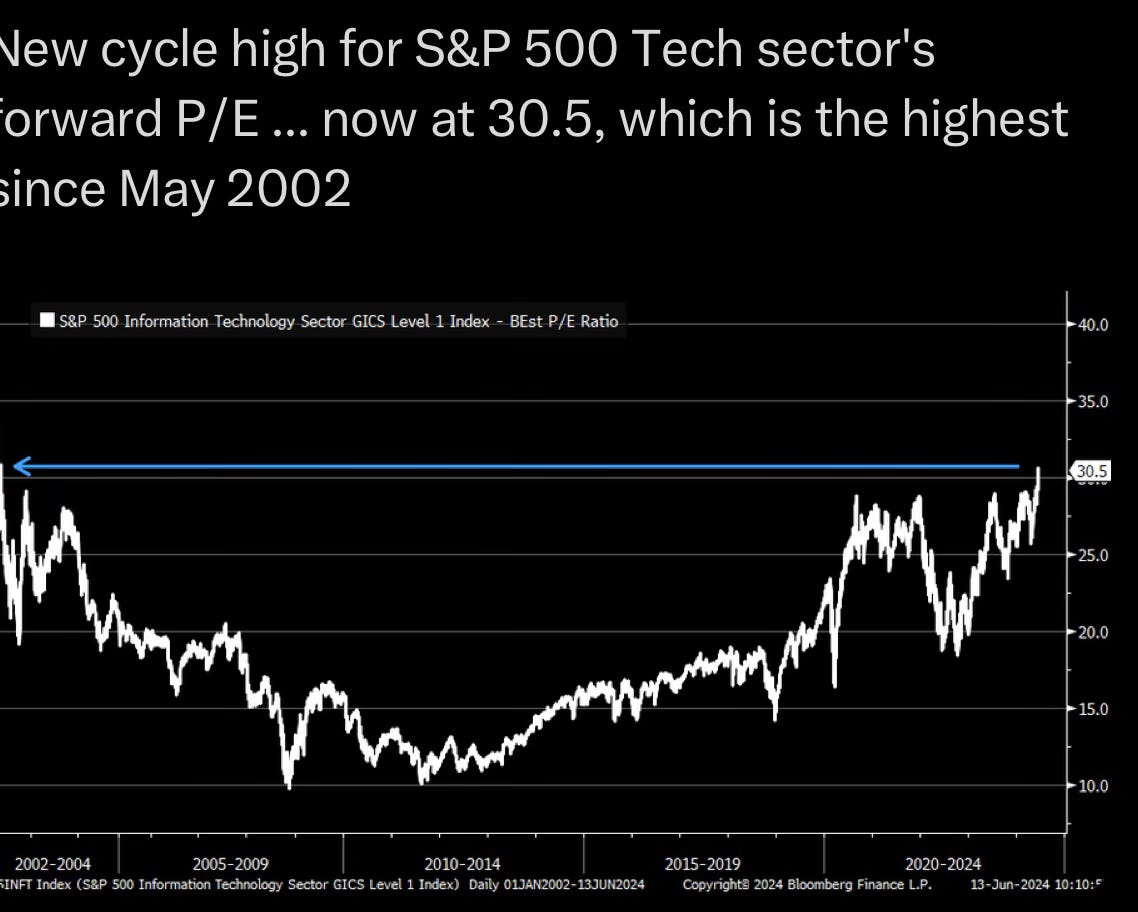In Francis Ford Coppola’s "Apocalypse Now," Lieutenant Colonel Kilgore famously declares, "I love the smell of napalm in the morning... it smells like victory." This chilling proclamation, made amidst the brutal chaos of war, symbolized a delusional sense of triumph over a doomed conflict. Today, Wall Street echoes this misplaced confidence, reveling in the intoxicating aroma of a bubble forming in the morning air. As the stock market hits record highs this June, the harsh realities lurking beneath these soaring indices paint a far less victorious picture.
The Ticking Time Bomb on Wall Street
On the surface, the stock market appears to be thriving, with major indexes like the S&P 500 and Nasdaq soaring to unprecedented heights. Yet, this rally is a mere mirage, precariously perched on the backs of a select few tech giants – the "Magnificent Seven" or FAANG stocks. These West Coast behemoths – Apple, Microsoft, Google, Nvidia, Meta, and Tesla – have become the lifeline of the market, masking the grim performance of the broader economy. While these tech titans push the indices to new records, a deeper dive reveals a vastly different and deeply concerning story. The percentage of New York Stock Exchange stocks hitting new three-month lows has climbed to levels unseen since the dark days of 2022, a harbinger of the turmoil that may lie ahead.
In stark contrast to the soaring indices, the average Nasdaq 100 company has seen a staggering 19% drawdown year-to-date in 2024, signaling that investments outside these tech companies have been nothing short of financial quicksand for most investors.
The Tech Bubble 2.0: The Smell of a Bubble
The overvaluation of the tech sector is glaring, with the forward price-to-earnings (P/E) ratio of the S&P 500 tech sector skyrocketing to a staggering 30.5 – the highest level since the infamous tech bubble burst in 2001.
This elevated P/E ratio suggests that stock prices are inflating at an alarming rate, far outpacing actual earnings growth. Investors are essentially paying a premium for diminishing returns, inflating a bubble that could burst with the slightest prick. A closer examination reveals that these tech giants are the only ones showing earnings per share growth. The rest of the S&P 495, excluding the tech titans, has seen earnings decline by a concerning 5%, highlighting the lack of broad-based earnings growth across the economy. The illusion of a booming economy, painted by record-high stock indices, quickly fades when faced with the stark reality of widespread earnings stagnation.
Buffett Indicator Sounds the Alarm
The Buffett Indicator, a widely respected valuation metric that compares the total market capitalization of U.S. stocks to the country's GDP, currently stands at an alarming 188%. This suggests that the stock market is significantly overvalued relative to the size of the economy, with the ratio approximately 53.09% (or about 1.7 standard deviations) above the historical trend line – a clear indication of a potential bubble.According to GuruFocus, which calculates a modified version of the Buffett Indicator by adding the total assets of the Federal Reserve, the current ratio of 191.5% puts the market in the "significantly overvalued" territory. Historically, when this ratio has been this high, it has correlated with lower long-term returns for the stock market, a warning sign that investors would be wise to heed.
Other Valuation Metrics Flashing Red
The S&P 500's trailing P/E ratio currently stands at 24.77, well above its longer-term average of around 19, according to FactSet data. These valuations are considered high by many analysts, adding to the growing chorus of concern. The Morningstar US Market Index's price/fair value ratio, which compares a stock's price to its estimated fair value, is also elevated, suggesting that the overall market may be overvalued and ripe for a correction. These various valuation metrics, combined with the concentration of gains in a handful of tech stocks, paint a concerning picture of a potentially overheated and frothy market, reminiscent of the tech bubble of the early 2000s. As investors bask in the aroma of inflated stock prices, they would be wise to heed the lessons of history and question the true nature of this perceived success, lest they find themselves caught in the crosshairs of a bursting bubble.
(To Continue Reading the rest of the economic and data analysis to include retail sales and the real estate market consider being a Paid Coastal Journal Subscriber)
Keep reading with a 7-day free trial
Subscribe to The Coastal Journal to keep reading this post and get 7 days of free access to the full post archives.







